Precautionary list of substances recommended for avoidance
P&W - Precautionary List
Perkins+Will (P+W)
Chemicals of high concern
SCHF - Hazardous 100
Toxic-Free Future (formerly Safer Chemicals, Healthy Families (SCHF))
Candidate Chemical List
CA SCP - Candidate Chemicals
California Department of Toxic Substance Control (CA DTSC)
Red List substances to avoid in Living Building Challenge V3 projects
Living Building Challenge 3.0 - Red List of Materials & Chemicals (retiring December 31, 2024)
International Living Future Institute (ILFI)
Assessment of regulatory needs
EU - PACT-RMOA Substances
European Union / European Commission (EU EC)
Some Solvents
GSPI - Six Classes Precautionary List
Green Science Policy Institute (GSPI)
Chemicals of High Concern
MDH - Chemicals of High Concern and Priority Chemicals
Minnesota Department of Public Health
Chemicals of High Concern to Children
WA DoE - Chemicals of High Concern to Children
Washington State Department of Ecology (WA DOE)
Designated Chemical
CA DTSC - Biomonitoring California Chemical List
California Department of Toxic Substance Control (CA DTSC)
Red List substances to avoid in Living Building Challenge V3.1 projects
Living Building Challenge 3.1 - Red List of Materials & Chemicals (retiring December 31, 2024)
International Living Future Institute (ILFI)
Red List substances to avoid in Living Building Challenge V4.0 projects
Living Building Challenge 4.0 - Red List of Materials & Chemicals - Effective February 1, 2025
International Living Future Institute (ILFI)
Declarable and Reference Substance Lists (DSL and RSL)
IEC 62474 - Material Declaration for Products of and for the Electrotechnical Industry
International Electrotechnical Commission
Chemicals of High Concern to Children
Vermont Chemicals of High Concern to Children
Vermont Environmental Health Division
Food Contact Chemicals Database Version 5.0
Food Contact Chemicals Database (FCCdb)
Food Packaging Forum
Substances Restricted in Toys
The Toy Safety Directive
European Union / European Commission (EU EC)
Flame Retardants
American Apparel and Footwear Association Restricted Substance List (AAFA RSL)
American Apparel and Footwear Association
ZDHC - MRSL v2.0
ZDHC - MRSL v2.0
Zero Discharge of Hazardous Waste Chemicals Programme
TSCA Commercially Active
TSCA Chemical Substance Inventory (Active-Inactive)
US Environmental Protection Agency (US EPA)
Flame Retardants (Non-electronic)
GreenScreen Certified Standard for Furniture & Fabrics Bronze RSL
Clean Production Action (CPA)
Halogenated Flame Retardants (Electronics)
GreenScreen Certified Standard for Furniture & Fabrics Bronze RSL
Clean Production Action (CPA)
Flame Retardants (Non-electronic)
GreenScreen Certified Standard for Furniture & Fabrics Silver-Gold RSL
Clean Production Action (CPA)
Halogenated Flame Retardants (Electronics)
GreenScreen Certified Standard for Furniture & Fabrics Silver-Gold RSL
Clean Production Action (CPA)
GADSL Declarable Substances - Information is being collected for a non-regulatory purpose (D/FI)
Global Automotive Declarable Substance List (GADSL)
Global Automotive Stakeholder Group (GASG)
Halogenated Flame Retardants (Bronze)
GreenScreen Certified Standard for Medical Supplies & Devices Bronze RSL
Clean Production Action (CPA)
Halogenated Flame Retardants
GreenScreen Certified Standard for Medical Supplies & Devices Silver-Gold RSL
Clean Production Action (CPA)
Potential CHRONIC health effects (over time or long-term)
OR OHA - High Priority Chemicals of Concern for Children's Health (HPCCCH)
Oregon Health Authority
Reportable Substances and Future Restrictions in Products
Apple Regulated Substances Specification
Apple Inc.
New Zealand Inventory of Chemicals (NZIoC)
New Zealand Inventory of Chemicals
Te Mana Rauhī Taiao (Aotearoa New Zealand EPA)
The Australian Inventory of Industrial Chemicals
The Australian Inventory of Industrial Chemicals
Australian Government
Existing Chemicals List
Korea Existing Chemicals List
Korea Ministry of Environment
Philippine Inventory of Chemicals
Philippine Inventory of Chemicals
The Philippine Government
DSL-all
EC - CEPA DSL
Environment Canada & Health Canada (EC)
NICNAS
Australia - National Industrial Chemicals Notification and Assessments (NICNAS)
Australian Government
Avoidance of Organohalogens and Functionally Related Chemical Classes of Concern
C2C Certified v4.1 Product Standard Restricted Substances - Effective July 1, 2025
Cradle to Cradle Products Innovation Institute (C2CPII)
CSCP - Reportable Ingredient List
California Safe Cosmetics Program - Reportable Ingredient List
California Department of Public Health (CDPH)
ZDHC - MRSL v3.1
ZDHC - MRSL v3.1
Zero Discharge of Hazardous Waste Chemicals Programme
Data generation and assessment
EU - PACT-RMOA Substances
European Union / European Commission (EU EC)
Regulatory risk management
EU - PACT-RMOA Substances
European Union / European Commission (EU EC)
 Likely to cause
Likely to cause
 Can cause
Can cause
 May cause
May cause









